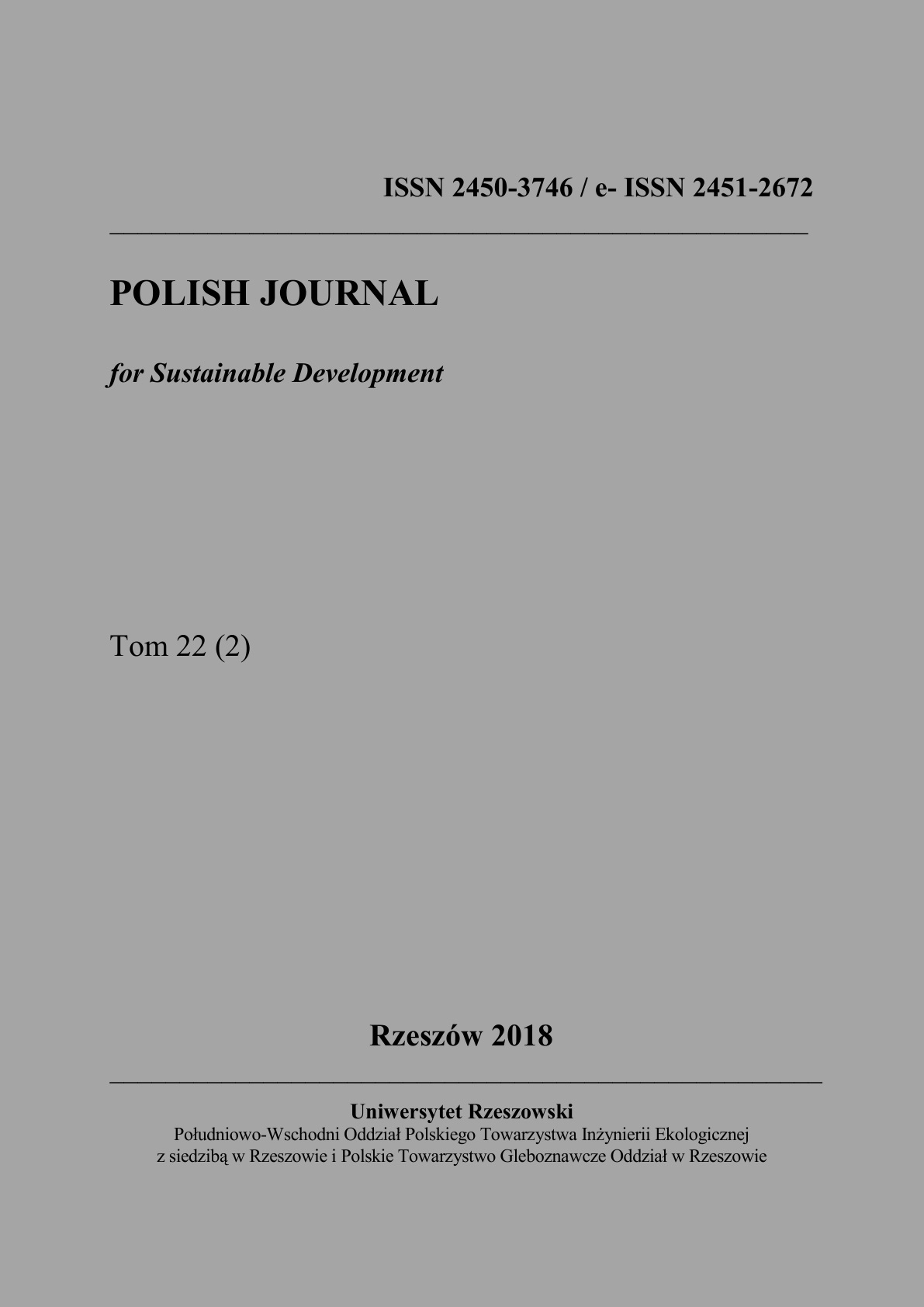Choosen elements of waste management in the town and municipality of Narol
DOI:
https://doi.org/10.15584/pjsd.2018.22.2.5Keywords:
municipal waste, waste management, NarolAbstract
The aim of this work was the assessment of current state of waste management in the area of municipality and the town of Narol. The number and types of the morphological groups of waste depend, among others, on the demographic structure and inhabitants’ lifestyle. In this conditions waste is traditionally recognized as a source of pollution, but if utilized properly, it can be still a valuable source of raw materials. The diversity of the composition and properties of municipal waste (which moreover, change over time), but also the differences in characteristics of its generation locations as well as methods of collecting, make impossible to obtain sufficient information on the quantity and quality of waste, without analysis of systematically gathered data. The municipality of Narol produces annually over 2298 tons of municipal waste, 26% of which are collected within the town. It was found that the food waste and fraction below 10 mm dominates among all morphological groups of waste.
Downloads
References
Förster J., Loos M. 2014. Focus on the environment. [in:] Kotzeva M. (ed.). Eurostat regional yearbook. Luxembourg: Publications Office of the European Union. 257-274.
Generowicz A., Gąska K. 2014. Research on waste generation indicators for 40 thousand inhabitants community. Archives of Waste Management and Environmental Protection. 16. 67-74.
Jędrczak A., Szpadt R. 2006. Określenie metodyki badań składu sitowego, morfologicznego i chemicznego odpadów komunalnych. [dok. elektr.: http:// www.mos.gov.pl data wejścia 21.11.2018].
Jurczyk Ł., Koc-Jurczyk J. 2015. Problematyka gospodarki odpadami na Pogórzu Dynowskim. [w:] J. Krupa (red.). Kreowanie przedsiębiorczości w turystyce na terenach wiejskich oraz ochrona dziedzictwa kulturowego. Wydawnictwo Związku Gmin Turystycznych Pogórza Dynowskiego. 83-98.
Kassenberg A. 2018. Gospodarka o obiegu zamkniętym idea, pakiet UE i polska mapa drogowa. Konferencja GOZ w miastach. Zamość 07.03.2018.
Ochrona Środowiska. 2016. Główny Urząd Statystyczny. Warszawa. 2017.
Sahin O., Kirim Y. 2018. Material recycling. [in:] Comprehensive Energy Systems. 2. 1018-1042.
Statystyczne Vademecum Samorządowca 2018. Urząd Statystyczny w Rzeszowie.
Ustawa z dnia 13 czerwca 2013 r. o gospodarce opakowaniami i odpadami opakowaniowymi. (Dz. U. 2013, poz. 888).
Ustawa z dnia 13 września 1996r. o utrzymaniu czystości i porządku w gminach. (Dz. U. nr 132, poz. 622).
Ustawa z dnia 25 stycznia 2013 r. o zmianie ustawy o utrzymaniu czystości i porządku w gminach. (Dz. U. 2013, poz. 228).
Wójcik W. 2014. Charakterystyka odpadów komunalnych w oparciu o badania morfologiczne odpadów dla miasta Rzeszowa. [w:] Traczewska T.M., Kaźmierczak B. (red.). Interdyscyplinarne zagadnienia w inżynierii i ochronie środowiska. T. 4. Oficyna Wydawnicza Politechniki Wrocławskiej. 994-1013.
Downloads
Published
Issue
Section
License
Copyright (c) 2018 Polish Journal for Sustainable Development

This work is licensed under a Creative Commons Attribution-NonCommercial-NoDerivatives 4.0 International License.


